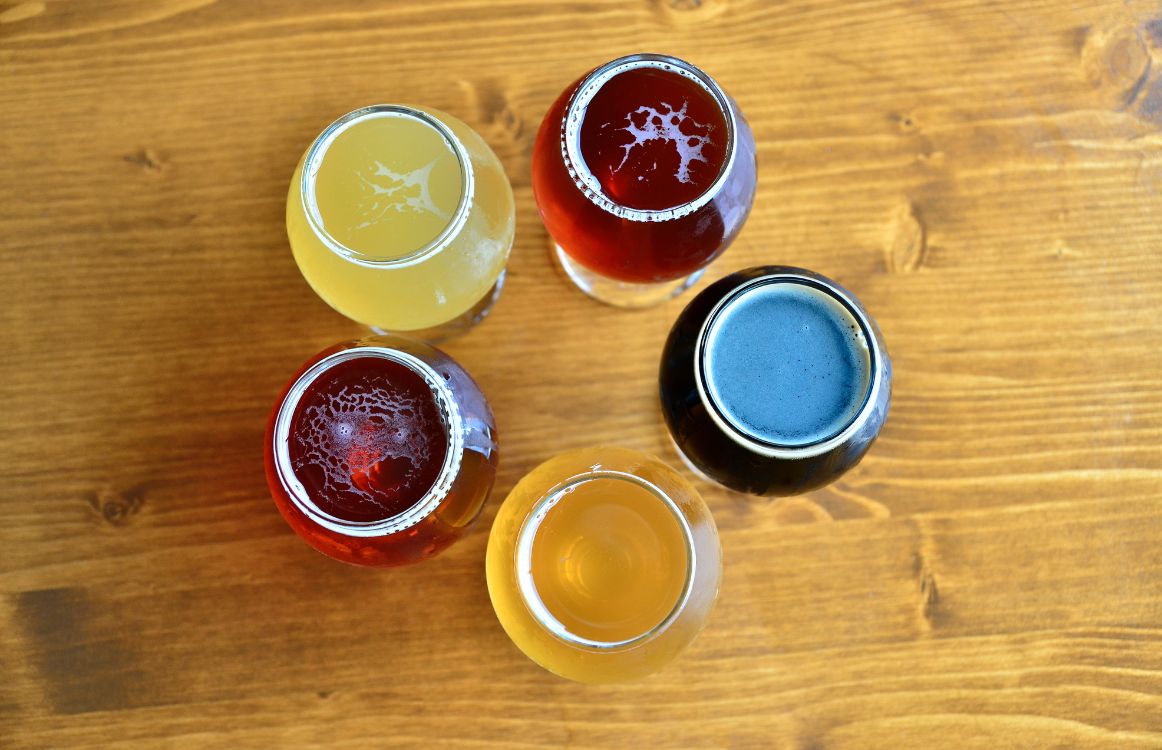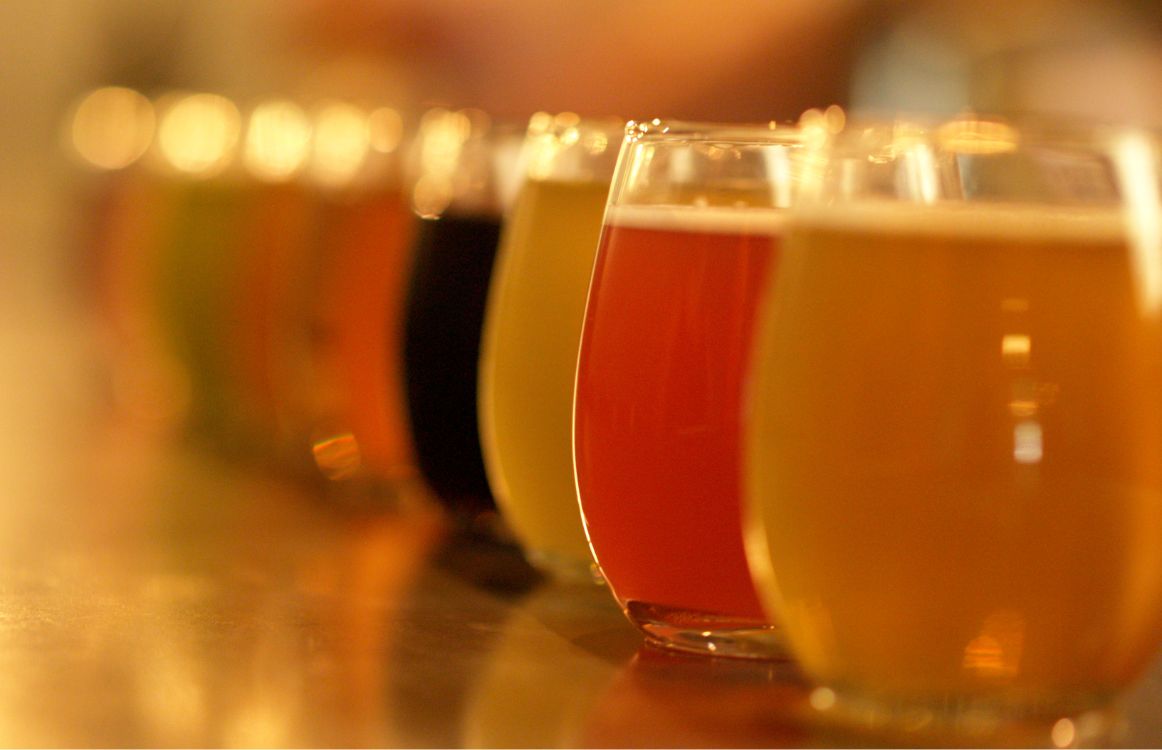Fruity Esters in Beer: Examples, Causes, and Control
So, you’re trying to control the fruity esters in your brew. Fruity esters in beer have a wide range, and you might be seeking to either enhance those flavors and aromas or curb them, and you can. Just remember that brewing is often called a craft for a reason. It will take understanding the process, what esters you are dealing with, and what tweaks and twerks you can implement to get the outcome you desire.
Making beer is both an art and a science, and we need to understand both to work with fruity esters.

How Beer Is Made
First, let’s run through the brewing process to get clear on where fruity esters come in.
For more than ten thousand years now, since humans decided to settle into domestic life, we have been making beer. It has never been a particularly complicated craft, though it is a bit more exacting than making wine. After all, crush grapes and let them sit out for a couple weeks and you have wine, essentially.
For beer, you have to toast your chosen grain to convert your carbohydrates to sugars, grind the grain to expose those sugars, and then boil the grain to release all those sugars into the water.
At this point, all you have is tea.
That’s right.
The same thing you would make if you dried out leaves or roots and boiled them in water is what you have once you boil your brewer’s grain.
Fortunately, the liquid you have now, what we in the brewing industry call “wort,” is packed with sugars and ready for local wild yeast to descend and ferment.
Traditionally, hops are added either before or after the boil in order to cut in on all of that sweetness, adding a bittering effect.
For the next several days, or weeks depending on your yeast, your grain tea will become beer, and it is during those several days that all the magic takes place.
Fruity Esters
Yeast really is a magical living organism that works wonders with sugary products. It takes grapes from juice to wine, grains from tea to beer, even actual tea to kombucha. During the fermentation process, yeast consumes the sugars in the liquid for energy and releases alcohol and carbon dioxide as waste products – lucky us.
And when we describe the brewing process, we usually stop there. Yeast turns sugar into alcohol and carbon dioxide. Period.
But the truth is that so much more happens during fermentation. Yeast creates hundreds of other chemical reactions, releases enzymes and hundreds of other byproducts that contribute to wine, beer, liquor, and even bread.
It is why grain tea does not simply become alcoholic grain tea but rather, beer. The flavors and aromas are so much more complex than simply making a non-alcoholic beverage alcoholic.
The fruity esters produced during fermentation are just one example of this complexity.
Types of Fruity Esters
The fermentation process produces myriad fruity esters, fruit-like flavors and aromas generated from chemical compounds. These esters include isoamyl acetate, which resembles banana and pear, ethyl acetate, which hints of a light fruit solvent, ethyl caprylate, which lends flavors of apple, ethyl caproate, which creates flavors and aromas of apple mixed with anise, and phenylethyl acetate, which contributes notes of roses and honey.
Each one of these esters is produced during the fermentation process and are only possible thanks to yeast, but there are several steps brewers can take to choose for, emphasize, and curb various esters.
How Esters Are Produced
Esters are produced by yeast, yes, but it is also so much more than just that.

The Role of Yeast
The primary role yeast plays in the production of fruity esters is the strain of yeast you work with. Much more important than what the yeast does is what the yeast is. For example, the strain used for hefeweizen is responsible for the banana and clove-like flavors so popular for that beer. Which strain you choose should be factored in for which fruity ester you are seeking, and which you hope to avoid as the yeast strain of choice can and often does make or break a great beer.
Wort Composition
Further, brewers must consider how the particular yeast strain they are working with will interact with the composition of the wort. Which grains you choose, which hops you include, how long you boiled your wort, whether the grain has been toasted, are all directly related to the chemical reaction that takes place during fermentation. The yeast strain will respond to each variation you take with your wort and produce different flavors and aromas of fruity esters accordingly. For example, higher dissolved oxygen concentrations will inhibit fruity ester formation, and higher sugar concentrations will raise fruity esters.
Fermentation Style
Finally, how you decide to ferment will be a contributing factor in the question of fruity esters. Fermentation styles can include lagering, krausening, secondary racking, and more. Each tweak you make to your fermentation style, from raising the temperature or lowering it to secondary fermentations, will determine how your yeast reacts in the wort and the end resulting fruity esters. For example, stirring the wort during fermentation will increase fruity esters.
How to Control for Esters
Ultimately, these seemingly small decisions and subtle changes are what makes brewing a craft and not simply the brewing of tea. Yes, it is likely that as far back as several millennia ago, brewers were making these kinds of decisions, although, of course, not as informed and detailed as today, in terms of the best location for brewing, whether or not to toast grain, how long to ferment, and more. Each little tweak could produce a dramatically different beer. And as those brewers were clearly not afraid to experiment as evidenced by the wide range of beers we have to choose from today, neither should you be.
Who knows?
You may be the master brewer of the next great beer!
Cheers!
Are you still pitching fresh yeast every time? By reusing your yeast, you can save up to hundreds of thousands of dollars per year on just yeast alone!
Join the hundreds of brewers from all around the world using the Smartest Automated Yeast Cell Counter! Request a Free Demo Account today and experience firsthand how Oculyze can take your brewery to the next level!
Sources:
Stay on top on important fermentation insights – subscribe to our monthly newsletter and receive a hand-picked selection of our most relevant articles straight to your inbox.
Never miss a beat and get real time updates with a new article each workday by subscribing our social media channels.
Instagram | Facebook | Twitter | YouTube


